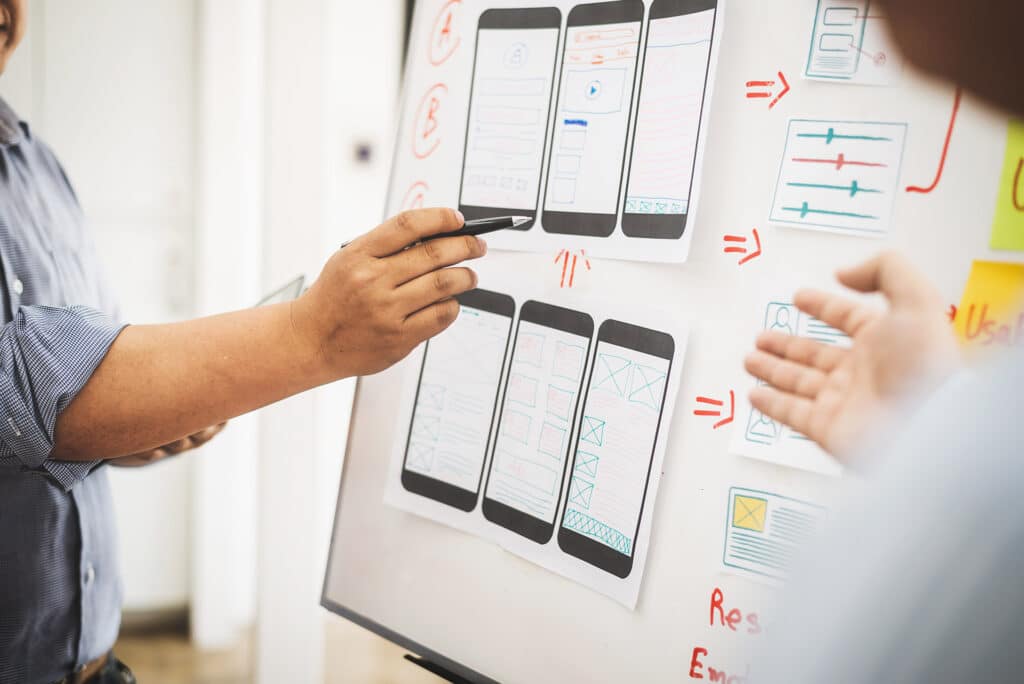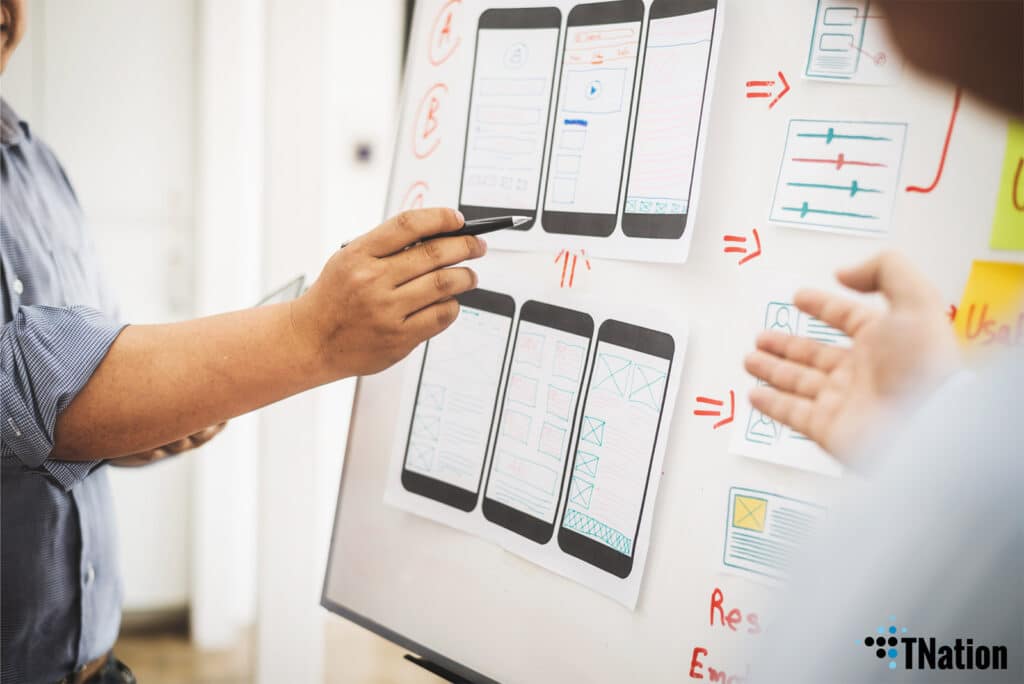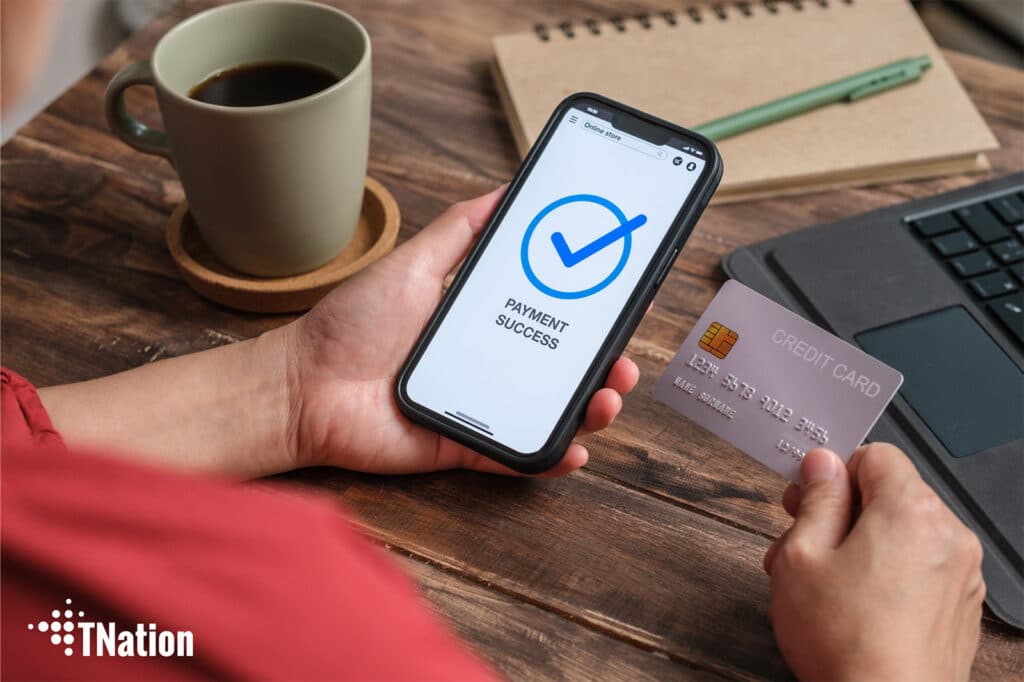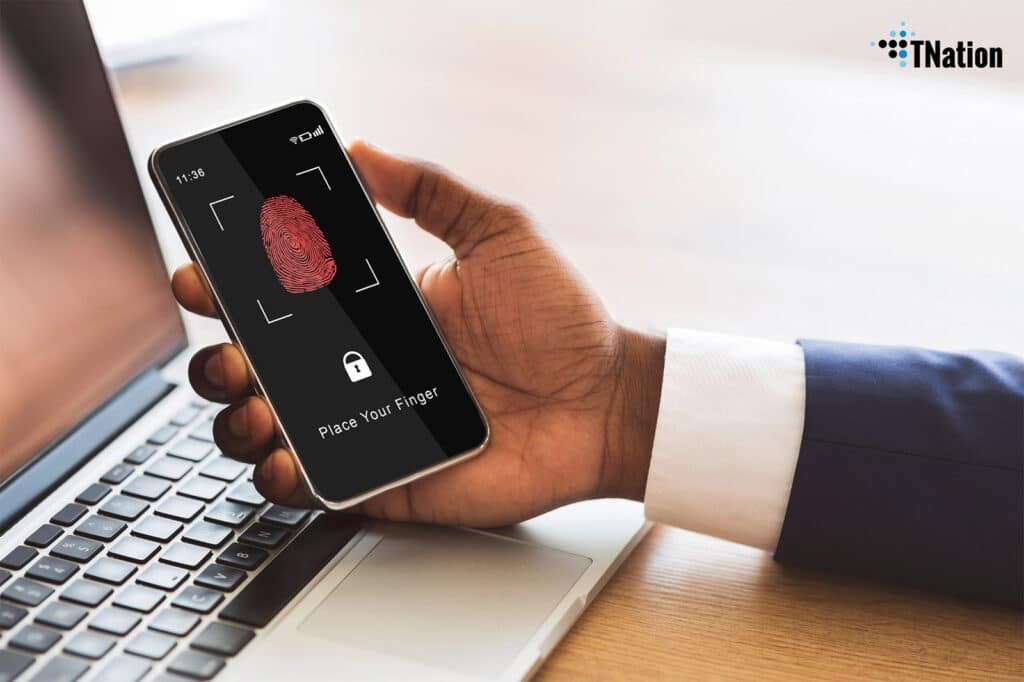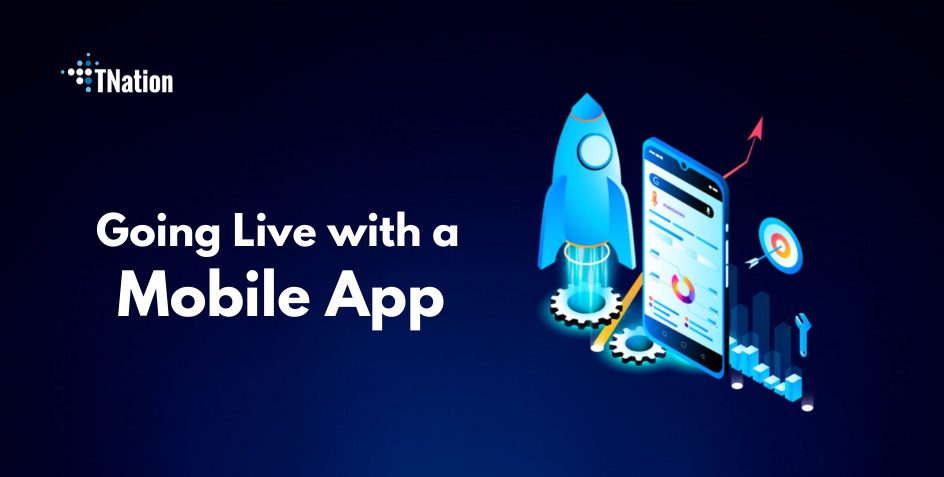Mobile banking has become increasingly popular as consumers seek more convenience and flexibility with their finances. Accordingly, mobile app development has made it easier and more secure for users to manage their finances on the go. However, a successful mobile banking app must be safe, user-friendly, and profitable. This guide provides the following:
- Strategic steps for successful mobile banking app development.
- A comprehensive overview of the best practices.
- The importance of apps for mobile banking.
What is a Banking App?
A banking app is a mobile application that allows users to manage their banking and financial accounts from their smartphone or another mobile device. Banking apps are becoming increasingly popular as they provide a convenient way to manage finances, enabling users to access their accounts anytime, anywhere. According to Statista, by November 2022, the total number of transactions completed with contactless cards in the United Kingdom alone had surpassed 15.4 billion.
They also provide access to other financial services, such as budgeting tools and investment advice. For financial institutions, banking apps can be essential for establishing a mobile banking app to remain competitive. An application stands out amid numerous conventional tools because it has evolved into the most convenient and effective client connection channel.
Today’s consumer prefers a bank with a user-friendly website, Internet banking, user-friendly application, and quick services. As a result, to retain client loyalty and remain competitive, a bank must be portable.
How Much Does Banking Mobile App Development Cost?
The cost of banking mobile app development depends on a range of factors, including the complexity of the app, the platforms it is being developed for, the number of features required, and the cost of any third-party services.
Generally speaking, the cost of developing a basic banking app can range from as little as a few thousand dollars to tens of thousands of dollars. The cost of developing a mobile banking app will vary depending on its features, the platform it’s being built for, and the development team and processes involved. Generally, developing a mobile banking app will cost anywhere from €50,000 to €200,000.
Overview of the Mobile Banking App Market
According to Vantage Market Research, the Global mobile banking market is projected to reach a value of €1,269 Million by 2028. The reason behind this change in using banking apps instead of visiting the brick-and-mortar branch is influenced by recent global developments.
During the past years, the lockdown has influenced the widespread use of mobile applications, which provide quick and easy access to products and services. That said, the modern fast, paced life affects mobile app development and the standard of what one banking app must have.
- Non-stop access
- Paying bills quickly
- Paying off loans online
- Transaction history and review
- Remote depositing options
- Implemented security practices
Ultimately, financial institutions gain much more by utilizing this system. To name a few, the primary benefit is enhanced customer experience who will return to the same bank. According to Google research, 4 in 10 smartphone owners use their banking apps for finance activities. In addition, 55% of respondents claim that the top reason to install a finance app is to make a task or activity easier. Another two benefits are naturally reduced operating expenses and return on investment (ROI).
Which Features Make a Good Banking App?
A banking app is a convenient way for customers to manage their finances, make payments, and track their spending. But with so many banking apps, how do you know which ones are the best? However, an excellent mobile app development should include certain features that make it easy to use, secure and reliable.
Security: Security should be a top priority for any banking app. A sound banking app should have multiple security measures, such as two-factor authentication, encryption, and biometric authentication. This ensures that your financial data is safe and secure.
Multi-factor Authentication: A good banking app should also provide users with multiple layers of authentication. This ensures that only authorized users can access their accounts.
Secure payment and transaction processing: A good banking app should provide specific amounts and transaction processing. This ensures that all transactions are secure and users are protected from fraud.
User-Friendly Interface: A good banking app should have an intuitive and user-friendly interface. It should be easy to navigate and use, with clearly labeled options and features. The app should also be designed with the user’s convenience in mind. For example, adding and removing accounts, changing settings, and viewing transactions should be easy.
Real-Time Notifications: A good banking app should provide real-time notifications about all transactions, including deposits and withdrawals. This ensures that the user is informed of any changes to their account.
Multi-Currency Support: A good banking app should support multiple currencies. This allows users to make payments in different currencies without converting them manually.
Financial Insights: A good banking app should give users insights into their finances. This includes providing information about spending patterns, budgeting advice, and other helpful tips.
Budgeting Tools: A good banking app should include budgeting tools. This allows users to set and track their spending goals easily. The app should also provide users with an overview of their financial health.
Reliability: A good banking app should be reliable and free of bugs or glitches. It should also be responsive and load quickly so that users can access their account information quickly and easily.
Customer Support: A good banking app should also provide customers with a reliable source of customer support. This could include a live chat feature, an online help center, or an email address where customers can ask questions or concerns.
ATM/Bank branch locator: A good banking app should also provide users a convenient way to locate ATMs and bank branches. This makes it easy for users to find the closest ATM or bank branch where they can access their funds.
Security of the Banking App
As mobile banking apps become increasingly popular, mobile app development and financial institutions must provide secure and reliable banking services for their customers. Mobile banking apps offer easy and convenient access to financial accounts and transactions, but with this increased convenience comes a greater risk of fraud and security breaches. As a result, financial institutions must ensure that their mobile banking apps are secure and provide customers with a safe and secure banking experience.
The first step to ensuring the security of a banking app is to employ the latest security technologies. Good banking apps should use secure encryption technologies to protect user data and transactions. More often than not, it also means using two-factor authentication to verify a customer’s identity when they log into the app. It can include using a one-time password sent to the customer’s mobile device or biometric authentication using the customer’s fingerprint or facial recognition.
In addition to using secure encryption and authentication technologies, banking apps should also ensure that it is regularly updated with the latest security patches and bug fixes. This way, mobile app development will guarantee the app is secure against any newly discovered security vulnerabilities and keep customer data safe from hackers and malicious actors.
A good rule of thumb is that banking apps are only available in trusted app stores. This will help to prevent malicious actors from distributing malicious apps that resemble the bank’s app and attempting to steal customer data. Banks should also verify customer devices to ensure that they are running the latest version of the app, as malicious actors may try to target outdated versions, which may be more vulnerable to security breaches.
Finally, banks should provide customers with information on best data security practices, such as using strong passwords, avoiding public Wi-Fi connections, and regularly updating their apps. Banks should also clarify to customers that they should never share personal or financial information with third parties.
What Technology is Used in Banking Mobile App Development?
Technology is an essential part of banking mobile app development, whether it is native or cross-platform. Every mobile app must be designed to provide customers with a secure, user-friendly experience. Hence development teams use the latest technology to ensure the security of customer data, provide a smooth user experience, and offer a wide range of services. Below is an overview of the technologies used in banking mobile app development, both native and cross-platform.
Native apps
Native apps are those developed specifically for a particular operating system, such as Android or iOS. To create a native banking app, software developers must use the native programming language of the operating system. For instance, Android apps use programming languages such as Java or Kotlin. iOS apps utilize Objective-C or Swift. Developers must also use the platform’s specific software development kit (SDK) and other tools. For example, Android developers must use the Android SDK, and iOS developers must use the Apple SDK.
Cross-platform
Cross-platform mobile app development uses technologies created with a single codebase to work nicely on both platforms. This type of development requires developers to use a framework such as React Native, Flutter, or Xamarin, which provides the necessary tools for developing apps for different operating systems.
Seamless Mobile Banking Experience: 7-Step Guide to Banking Mobile App Development
You might be wondering about the process of banking mobile app development. Banking app development is creating an application for banking activities such as money transfers, deposits, withdrawals, and other banking-related tasks. This process is typically handled by software developers, designers, and other development team members. First, however, let’s look at the steps necessary to build a banking app.
#1 Research & Planning
The first step is understanding the customer’s needs and creating a product plan. It serves as a blueprint for building banking apps and their features. This includes researching the target customer base, understanding their banking needs, and creating a product roadmap that outlines the features and functionality of the app. During this process, developers must consider the security requirements and user experience to ensure the app meets the customer’s needs.
#2 Design & User Experience
The next step is to design the app. This involves creating the user interface and user experience. This includes deciding on the look and feel of the app, choosing the right colors, fonts, and images, and determining how the user will navigate through the app. This step also involves creating the technical architecture, which is the foundation for the app and determines what technologies will be used.
#3 Deciding on Technologies
Deciding on technologies is an essential step in the development of banking apps. This involves researching the various technologies available and selecting the ones that best suit the application’s needs. Developers should carefully consider technologies such as programming languages, databases, frameworks, and platforms to ensure the application is secure, scalable, and meets the user’s needs. Additionally, the application architecture should be thoroughly planned before any development begins.
#4 Code
The fourth step is to develop the app. This involves coding the app and integrating it with the banking systems. This requires developers to have a deep understanding of the banking system and the technologies used in the development process. This step also requires extensive testing to ensure quality application and its security and reliability.
#5 Testing
This is the last step in the banking app development process. Testing involves running various tests to ensure the app works as expected in multiple scenarios and environments. The tests should include functional, usability, performance, reliability, and security tests. In addition, the app must be thoroughly tested against the requirements before its release to ensure it meets the user’s needs.
#6 Deploy & Maintain
The sixth step is to deploy the app. This involves setting up the app in the app stores and ensuring that it meets all the store’s requirements. This step also includes submitting the app to the appropriate app stores and marketing to the target customer base.
#7 Maintenance & Update
Finally, the development process is completed with ongoing maintenance and support. After the successful development and launch of the banking app, it is essential to regularly maintain and update the app to ensure its continued performance and security. It includes monitoring the app’s performance and making necessary upgrades, such as bug fixes, adding new features, and improving existing features. It also requires addressing any security issues that may arise. During maintenance and update, the development team should also test the app to ensure it runs correctly and that all features function as intended.
Conclusion
The development of banking apps has revolutionized how we interact with our finances. It has made managing our money more manageable and more accessible than ever. But, from the conception of an idea to the design, development, and testing of an app, developing banking apps is a complex and rewarding process.
By implementing the right strategies and leveraging the right tools, developers can create an app that meets the needs of their customers and provides a positive user experience. For example, with banking apps, developers can improve customers’ lives and make managing their money more enjoyable.
Revolutionize Your Business with Our Expert Mobile App Development Services – Get Started Now!
